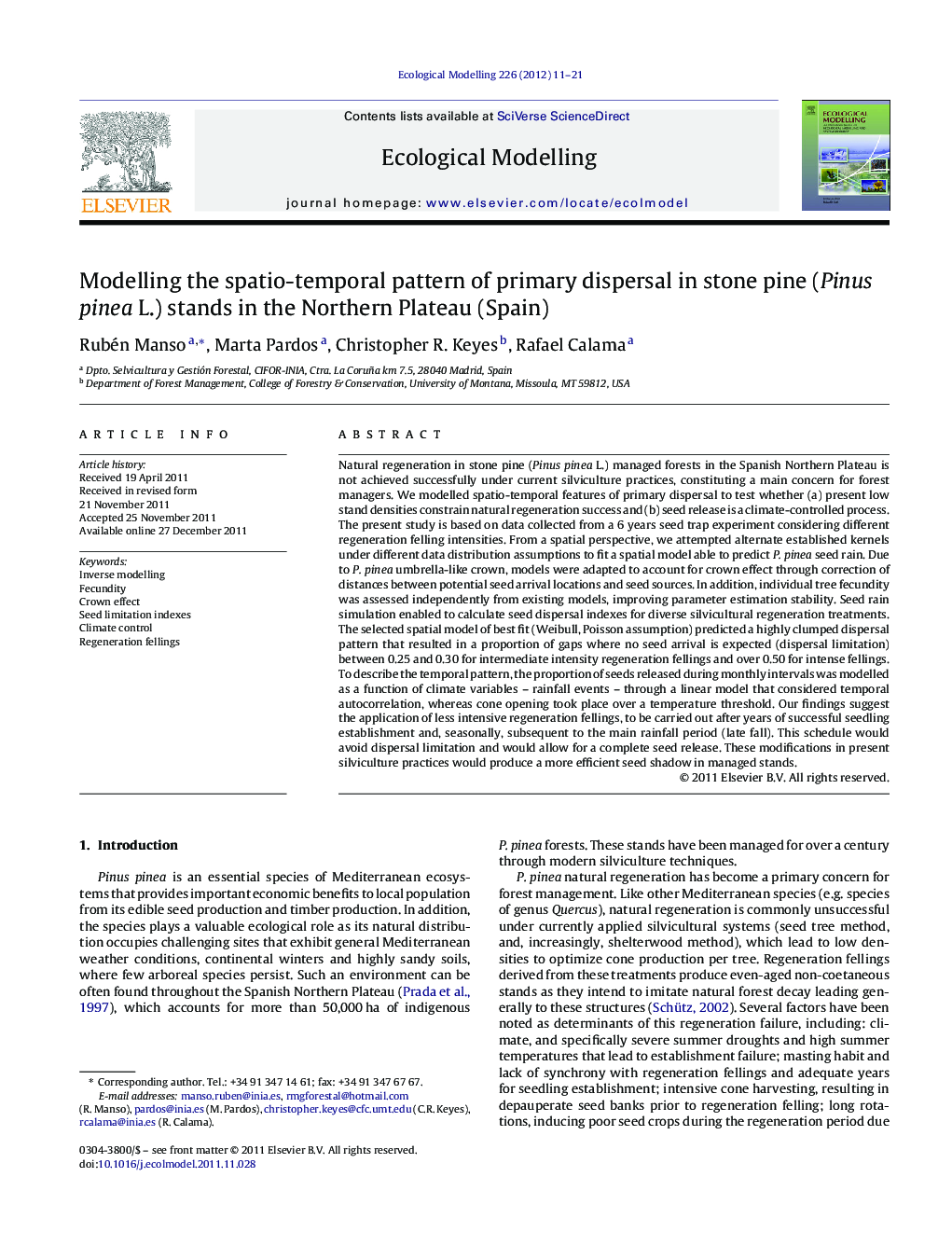| Article ID | Journal | Published Year | Pages | File Type |
|---|---|---|---|---|
| 4376647 | Ecological Modelling | 2012 | 11 Pages |
Natural regeneration in stone pine (Pinus pinea L.) managed forests in the Spanish Northern Plateau is not achieved successfully under current silviculture practices, constituting a main concern for forest managers. We modelled spatio-temporal features of primary dispersal to test whether (a) present low stand densities constrain natural regeneration success and (b) seed release is a climate-controlled process. The present study is based on data collected from a 6 years seed trap experiment considering different regeneration felling intensities. From a spatial perspective, we attempted alternate established kernels under different data distribution assumptions to fit a spatial model able to predict P. pinea seed rain. Due to P. pinea umbrella-like crown, models were adapted to account for crown effect through correction of distances between potential seed arrival locations and seed sources. In addition, individual tree fecundity was assessed independently from existing models, improving parameter estimation stability. Seed rain simulation enabled to calculate seed dispersal indexes for diverse silvicultural regeneration treatments. The selected spatial model of best fit (Weibull, Poisson assumption) predicted a highly clumped dispersal pattern that resulted in a proportion of gaps where no seed arrival is expected (dispersal limitation) between 0.25 and 0.30 for intermediate intensity regeneration fellings and over 0.50 for intense fellings. To describe the temporal pattern, the proportion of seeds released during monthly intervals was modelled as a function of climate variables – rainfall events – through a linear model that considered temporal autocorrelation, whereas cone opening took place over a temperature threshold. Our findings suggest the application of less intensive regeneration fellings, to be carried out after years of successful seedling establishment and, seasonally, subsequent to the main rainfall period (late fall). This schedule would avoid dispersal limitation and would allow for a complete seed release. These modifications in present silviculture practices would produce a more efficient seed shadow in managed stands.
► Pinus pinea primary dispersal was analyzed through inverse modelling techniques. ► Classical models were adapted to account for crown effect. ► Fecundity estimation was assessed independently, reducing model complexity. ► The resulting highly aggregated seed shadow led to a severe dispersal limitation. ► Seed release proved climate-controlled.
